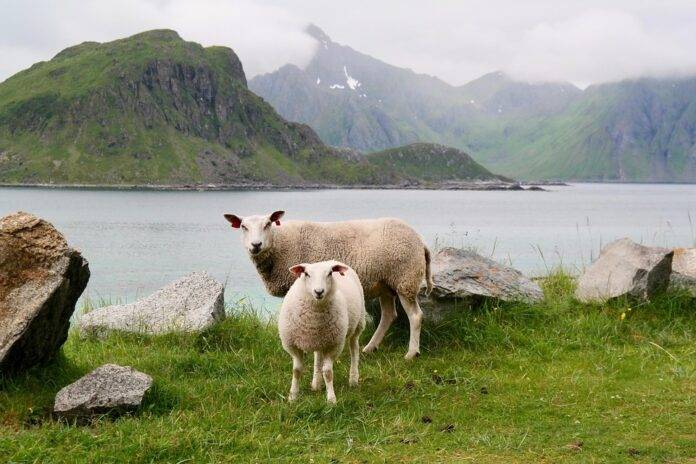Introduction
The organic and free-range lamb market has witnessed significant growth over recent years, driven by changing consumer preferences towards healthier and more sustainable food options. This report aims to analyze the top 10 fastest-growing markets for organic and free-range lamb, providing detailed insights into market trends, financials, volumes, and other relevant data.
Market Overview
The global organic and free-range lamb market is projected to grow at a compound annual growth rate (CAGR) of approximately 8-10% from 2023 to 2028. This growth can be attributed to increased awareness of the health benefits associated with organic meat, rising disposable incomes, and a growing trend towards ethical and sustainable farming practices.
Top 10 Fastest Growing Markets
1. United States
The United States is leading the charge in the organic and free-range lamb market. In 2022, the market size was valued at approximately $300 million, with projections indicating it could reach $500 million by 2028. The volume of organic lamb sold has increased by 15% annually, driven by a growing health-conscious consumer base and a rising number of organic farms.
2. United Kingdom
The UK market for organic and free-range lamb is also experiencing rapid growth. The market was valued at around £200 million in 2022, with expectations to grow to £350 million by 2028. The demand for organic products is fueled by the increasing popularity of farm-to-table dining and the rise in ethical consumerism.
3. Australia
Australia has a robust organic lamb industry, with an estimated market size of AUD 150 million in 2022. The market is expected to grow to AUD 250 million by 2028. Australia’s unique climate and pasture conditions contribute to high-quality lamb production, appealing to both domestic and international markets.
4. New Zealand
New Zealand is renowned for its premium lamb products. The organic and free-range lamb market in New Zealand was valued at NZD 120 million in 2022, with projections reaching NZD 200 million by 2028. New Zealand’s strong export market plays a significant role in its growth, with key exports going to the UK, USA, and Europe.
5. Germany
Germany is experiencing a surge in demand for organic lamb, with the market valued at approximately €80 million in 2022. The growth rate is expected to be around 12% annually, reaching €150 million by 2028. The increase in organic food consumption in Germany correlates with a rise in ethical consumerism and sustainable food practices.
6. Canada
The Canadian organic lamb market is gaining momentum, estimated at CAD 50 million in 2022. The market is projected to grow to CAD 100 million by 2028. Factors contributing to this growth include a shift in dietary preferences towards organic products and government support for organic farming.
7. France
France has a rich culinary tradition that includes lamb, and the organic segment is growing rapidly. The market was valued at €60 million in 2022, with expectations to reach €110 million by 2028. French consumers are increasingly opting for organic and locally sourced products, driving demand.
8. Italy
In Italy, the organic lamb market is valued at approximately €40 million in 2022, projected to grow to €80 million by 2028. The increasing trend of health-conscious eating and the popularity of Italian cuisine featuring lamb dishes contribute to this growth.
9. Japan
Japan represents a unique market for organic and free-range lamb. The market size was estimated at ¥10 billion in 2022, with forecasts suggesting growth to ¥20 billion by 2028. The Japanese market is characterized by high-quality standards and a growing interest in organic products among health-conscious consumers.
10. Brazil
Brazil is emerging as a significant player in the organic lamb market. The market was valued at BRL 30 million in 2022 and is projected to reach BRL 60 million by 2028. The growing middle class and increased awareness of organic products are key drivers of this growth.
Factors Driving Growth
Several factors are contributing to the rapid growth of organic and free-range lamb markets globally:
1. Health Consciousness
Consumers are increasingly aware of the health benefits associated with organic foods, leading to greater demand for organic lamb products. Organic lamb is perceived as healthier due to the absence of synthetic additives and hormones.
2. Ethical Consumerism
The rise of ethical consumerism is driving demand for free-range and organic products. Consumers are more inclined to support brands that practice humane animal husbandry and sustainable farming methods.
3. Sustainability Trends
As sustainability becomes a focal point for consumers, the demand for organic and free-range lamb continues to grow. Sustainable farming practices not only promote animal welfare but also contribute to environmental conservation.
4. E-commerce Growth
The rise of e-commerce has made it easier for consumers to access organic lamb products. Online platforms are facilitating direct connections between producers and consumers, increasing market reach.
Challenges Facing the Market
Despite the growth, the organic and free-range lamb market faces several challenges:
1. Price Sensitivity
Organic lamb is often more expensive than conventional lamb, which can deter price-sensitive consumers. This pricing issue may limit market penetration in certain demographics.
2. Supply Chain Constraints
The organic lamb market can face supply chain challenges, including limited availability of organic feed and the complexities involved in maintaining organic certifications.
3. Competition
As the market grows, competition from other protein sources, such as beef, poultry, and plant-based alternatives, poses a threat to the organic lamb market.
Conclusion
The organic and free-range lamb markets are poised for significant growth, driven by changing consumer preferences and a greater emphasis on health and sustainability. The top 10 fastest-growing markets, including the United States, United Kingdom, and Australia, are demonstrating promising trends that align with these consumer demands. However, challenges such as price sensitivity and supply chain constraints must be addressed to fully capitalize on this growth potential.
[Read More: Global Sheep Industry Report 2025: Market Trends & Forecasts]



